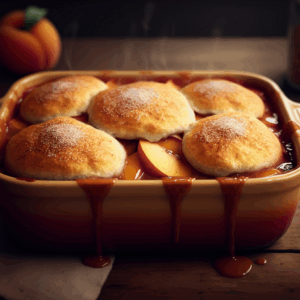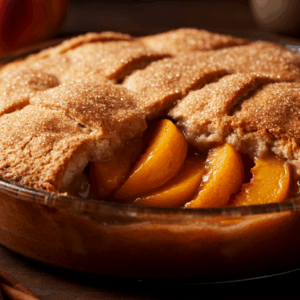The Essence of Southern Fried Chicken
Understanding the Southern Cooking Tradition
Southern cooking is much more than just food; it’s a living history. The roots of Southern cuisine stretch back to a fusion of West African, Native American, and European traditions, each contributing techniques and ingredients that transformed humble meals into soul-nourishing dishes. African slaves, with limited resources, developed ingenious methods to create flavorful, filling meals from basic ingredients. Their contributions—including spices, greens, corn, and frying techniques—shaped what we now know as soul food.
The importance of Southern cooking lies in its ability to bring people together. Traditionally, Southern meals are meant to be shared, fostering a sense of community and connectedness. Fried chicken, often the centerpiece of a Sunday or holiday meal, embodies this spirit perfectly. The aroma of chicken frying in the kitchen is an invitation, a symbol of warmth and welcome. In exploring Southern cooking, one learns not only recipes but the art of creating experiences and memories around food.
Why Fried Chicken is a Soul Food Staple
Fried chicken holds a special place in soul food culture. Its appeal stems from its versatility: it’s portable, easy to make, and can feed a crowd with relatively simple ingredients. Historically, fried chicken was a prized dish, often saved for Sundays and special gatherings when families could come together. Since chickens were relatively inexpensive and easy to raise, fried chicken quickly became accessible for many Southern households.
In African-American culture, fried chicken is more than just a dish; it’s a symbol of resilience and ingenuity. During segregation, when African-Americans faced limited access to restaurants, women in the community often made and sold fried chicken to sustain their families. Even today, the fried chicken tradition represents more than flavor—it’s a connection to ancestors and a way to honor their contributions to American cuisine.
Key Ingredients and Basics of Frying
The key to making authentic Southern fried chicken starts with quality ingredients and a few basic techniques. The classic ingredients include:
- Chicken pieces: Thighs, wings, drumsticks, and breasts are commonly used.
- Buttermilk: A classic Southern marinade, buttermilk tenderizes the meat while adding a subtle tang.
- Flour: Seasoned flour creates the crispy, golden crust that defines Southern fried chicken.
- Spices: Salt, pepper, paprika, cayenne, and garlic powder are typical, although each family may have its own blend.
The process begins with marinating the chicken in buttermilk, sometimes overnight. This step is crucial as it tenderizes the meat, infusing it with flavor and moisture. After marinating, the chicken is dredged in seasoned flour to create a crust.
Each piece is then fried in hot oil, often at around 350°F, until golden brown. The choice of oil is also important: peanut and canola oils, both with high smoke points, are commonly used to ensure an even cook without burning. Mastering these basics is the foundation of any great fried chicken recipe.
Preparing for the Perfect Fried Chicken
Choosing the Right Chicken Cuts
The cut of chicken plays a significant role in the final flavor and texture of fried chicken. Each part has unique characteristics:
- Breasts: Leaner with less fat but can be tender if cooked properly. Ideal for those preferring a milder flavor.
- Thighs: Rich in flavor due to higher fat content, making them juicy and tender.
- Drumsticks: Smaller, easier to handle, and great for crispy bites.
- Wings: Known for their crispy skin-to-meat ratio, perfect for appetizers or casual meals.
By understanding these differences, readers can choose cuts that suit their preferences and experiment with combinations to achieve a balanced platter.
Selecting and Using Seasonings Effectively
Seasoning is where fried chicken can truly shine. Basic seasonings include salt, black pepper, and garlic powder, but spices like paprika and cayenne add depth. Southern fried chicken recipes often layer flavors by seasoning the buttermilk marinade, the flour dredge, and even the chicken itself. This layering creates a depth of flavor that goes beyond the surface.
Experimenting with seasonings can make the recipe unique. For a touch of heat, cayenne and black pepper work well, while smoked paprika adds a subtle, smoky note. Readers are encouraged to adjust spice levels according to personal preference, building a blend that honors traditional flavors while making it their own.
Buttermilk Marinating: A Festive Twist
Buttermilk is the secret ingredient for tender fried chicken. It contains acids that help break down the proteins in the chicken, resulting in juicy, tender meat. For a holiday twist, spices like cinnamon, nutmeg, and a hint of clove can be added to the buttermilk marinade. These warm, aromatic spices add subtle holiday flavors without overpowering the classic Southern taste.
The marinating process is simple yet transformative: the chicken is submerged in seasoned buttermilk, covered, and left to marinate for at least a few hours, or overnight for optimal tenderness. This holiday-infused buttermilk marinade will bring a unique and memorable touch to any festive meal.
Mastering the Frying Techniques
Pan Frying vs. Deep Frying
Pan frying and deep frying are two classic methods for making fried chicken, each offering unique results:
- Pan Frying: Uses a shallow layer of oil, giving the chicken a textured, crispy crust. This method requires careful flipping to ensure an even cook and is ideal for those seeking a crunchy exterior.
- Deep Frying: Involves submerging the chicken fully in hot oil, resulting in a more uniform golden crust. This method is quicker but requires a greater volume of oil.
Choosing a frying method depends on preference and equipment. Pan frying allows for more control over texture, while deep frying offers a more consistent color and finish.
Achieving the Perfect Crisp
Achieving a crispy crust involves a few essential techniques. First, allowing the chicken to rest briefly after dredging helps the coating adhere better. Some cooks prefer a double coating (dipping the chicken twice in flour), which adds extra crunch. Additionally, it’s important not to overcrowd the pan, as this lowers the oil temperature and prevents proper browning.
Finally, maintaining the oil at a steady 350°F is crucial for an even cook. Too high, and the crust may burn before the chicken is cooked through; too low, and the chicken can become greasy.
Temperature Control and Oil Choice
The type of oil impacts the flavor and crispiness of the chicken. Peanut oil, for instance, has a high smoke point and subtle flavor, ideal for high-heat frying. Maintaining consistent oil temperature ensures a crisp exterior without making the chicken greasy.
Adding a Holiday Touch
Seasonal Spices and Marinades
Holiday spices like nutmeg, allspice, and cloves add a festive aroma to fried chicken. When mixed into the buttermilk marinade or the flour coating, they infuse each bite with warmth, creating a unique holiday experience. Readers are encouraged to experiment with these spices to give the chicken a seasonal twist.
Creating Festive Sides and Complements
Fried chicken becomes a meal when paired with classic Southern sides like:
- Candied Yams: Sweet and buttery, complementing the savory flavors of the chicken.
- Collard Greens: A soul food classic, adding depth and a bit of bitterness to balance the richness.
- Cornbread: Slightly sweet with a hearty texture, perfect for a holiday spread.
Each of these sides adds color, flavor, and variety to the meal, making it perfect for a festive dinner.
Presentation for a Christmas Feast
Presentation can elevate a meal, especially during the holidays. Serving fried chicken on a festive platter with garnishes like fresh herbs or edible flowers creates an inviting atmosphere. Adding small touches, like colorful napkins and holiday-themed tableware, can make the meal feel special.
A Legacy of Love: Passing Down the Recipe
The Role of Food in Family Traditions
Food is a powerful way to create and maintain family traditions. Fried chicken, in particular, is a dish that has united generations around the dinner table. Sharing this meal fosters connections, offering a chance to reflect on the past and create new memories.
Teaching the Next Generation
Passing down recipes like fried chicken teaches the next generation about family heritage. This section encourages readers to involve their children in the cooking process, teaching them the importance of tradition and culture through hands-on experience.
Preserving and Honoring Culinary Heritage
Culinary heritage is more than the food itself—it’s the stories, techniques, and memories associated with each dish. This chapter emphasizes the importance of keeping these traditions alive, encouraging readers to document family recipes and celebrate their roots through cooking.
In conclusion, the joy of cooking and sharing fried chicken goes beyond just the meal itself; it embodies tradition, love, and connection. By mastering the techniques for achieving the perfect crisp, exploring seasonal spices, and pairing with delightful sides, you can elevate this beloved dish into a centerpiece for your holiday gatherings.
Remember, food is not just about nourishment; it’s about creating lasting memories with loved ones. So gather your family, roll up your sleeves, and embrace the traditions that make your culinary heritage unique. Happy cooking!





